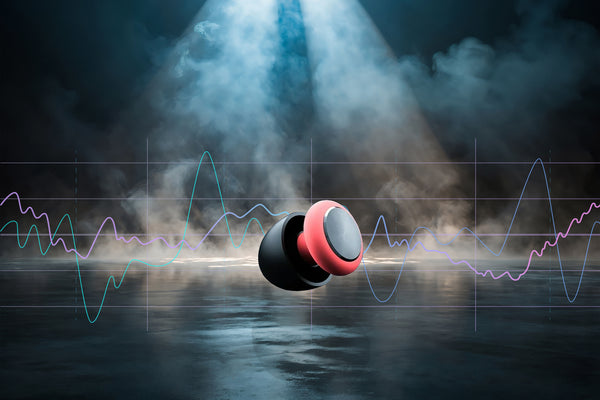How Loud is Too Loud? The Real Numbers Behind Noise-Induced Hearing Loss
The Invisible Danger: How Everyday Noise Can Damage Your Hearing
Hearing loss isn’t just something that happens with age—it’s happening now to people of all ages due to prolonged exposure to loud environments. Noise-Induced Hearing Loss (NIHL) is permanent and irreversible, but the good news is, it’s preventable.
So, how loud is too loud? Let’s break down the numbers.
Understanding Decibel Levels: When Sound Becomes Dangerous
Sound is measured in decibels (dB). The higher the decibel level, the more powerful the sound. Here’s what you need to know:
📊 Noise Levels & Their Impact on Hearing
|
Decibel Level (dB) |
Common Sounds |
Safe Exposure Limit |
|
30 dB |
Whisper, rustling leaves |
Unlimited |
|
60 dB |
Normal conversation, background music |
Unlimited |
|
85 dB |
Heavy city traffic, noisy restaurant |
8 hours |
|
95 dB |
Subway train, power tools |
1 hour |
|
105 dB |
Rock concert, chainsaw, nightclubs |
15 minutes |
|
120 dB |
Jet engine at takeoff, sirens |
Immediate risk |
|
140 dB+ |
Gunshots, fireworks at close range |
Pain & injury |
Anything over 85 dB can cause permanent hearing damage with prolonged exposure. The louder the noise, the shorter the safe exposure time before damage occurs.
The Science of Hearing Damage: How NIHL Happens
Inside your inner ear, tiny hair cells called stereocilia help convert sound waves into electrical signals for your brain. Loud noise destroys these cells, and unlike other cells in your body, they don’t regenerate.
Signs You’re Being Exposed to Dangerous Noise Levels
🔸 Ringing in your ears after a loud event (temporary tinnitus)
🔸 Difficulty hearing conversations in noisy environments
🔸 Muffled or distorted hearing after exposure to loud sounds
🔸 Needing to turn up the volume on devices more frequently
Even if symptoms fade, the damage remains and accumulates over time.
How to Protect Your Hearing Without Missing Out
If you’re regularly exposed to loud environments—whether at concerts, nightclubs, or in a professional setting—you need a reliable way to reduce harmful noise while still hearing clearly.
🔊 The Best Ways to Prevent Hearing Loss
-
Wear High-Fidelity Earplugs – Protect your ears without muffling sound quality.
-
Follow the 60/60 Rule – Keep headphone volume below 60% and limit listening to 60 minutes at a time.
-
Take Listening Breaks – Give your ears time to recover after exposure to loud environments.
-
Increase Distance from Speakers – Every step back significantly reduces sound intensity.
- Know When It's Too Loud – If you have to shout to be heard, it’s time for hearing protection.
Why Spares Are the Best Choice for Noise Protection
Unlike foam earplugs that block all sound indiscriminately, Spares use precision acoustic filters to reduce dangerous noise while keeping music and speech clear.
- Reduces volume without distortion
- Protects against harmful high-frequency sounds
- Comfortable for long wear at concerts, clubs, or work

